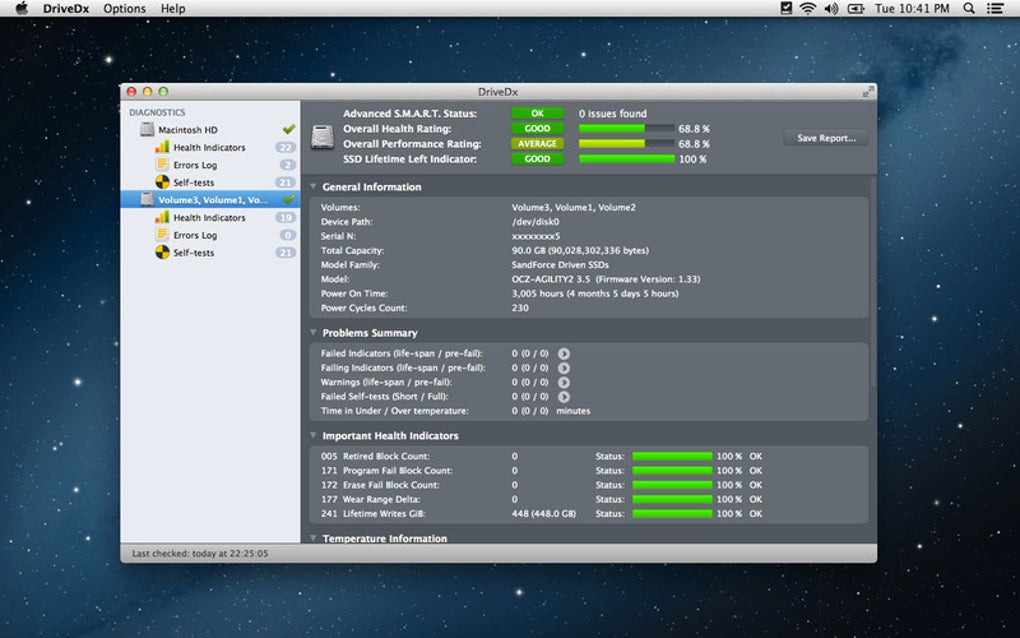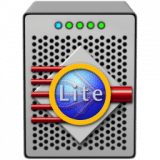Saving Drivedx Macupdate your Drivedx Macupdate settings within one Drivedx Macupdate particular property will not affect your choices on other CBS properties or if you visit this property with another device or from a different browser. In addition, it won’t affect any of your activities on third party properties. You have Drivedx Macupdate. DriveDx is an advanced drive-health diagnostic and monitoring utility. Save yourself from data loss and downtime that is associated with unexpected drive failures. Don't worry about losing your important data, music, and photographs.
If you have a new Mac, you probably think it’s going to last for years and years, but some new troubling data suggests that might not be the case. More than a few users are reporting that SSDs on new M1 and Intel Macs are possibly being overused by the system, which could cause them to wear out earlier than usual.

Twitter user @never_released started a thread that shows a report of an M1 Mac with very high write counts for a computer that’s only two months old. That led other M1 owners to run the same report, and many have also found excessive usage, including Macworld columnist Dan Moren.
In Moren’s comparison, his 2017 iMac records about 2.15 terabytes of data written each month for 14 percent of its lifecycle, while the new M1 MacBook tallies nearly 6TB and has lost 1 percent if its expected lifespan. That might not seem like much, but if you extrapolate over the course of the same amount of time, the MacBook’s SSD could be 30 percent to 40 percent used over the same period of time. Moren’s machine has 16GB of RAM, so the usage could be even higher for machines with 8GB of RAM.
Other users have reported that Macs with Intel processors are behaving just as strangely, with one user reporting a whopping 33 percent used after just 7 months.
SSDs are favored over traditional hard drives because they’re much faster, but SSDs do have a limited lifespan. An SSD wears down every time you write to it, and eventually, the drive will have problems and will likely need to be replaced. However, this is supposed to take several years to happen, and macOS spreads the writing across an SSD to extend its life. Based on these readings, that might happen a lot sooner than expected.
To see your disk usage, you can download DriveDx, which offers a free 2-week trial. More advanced users can dig into their drive’s health using smartmon tools and Terminal. You can find step-by-step instructions here.
It’s possible that there’s an error in the reporting tool, but it’s more likely that macOS is doing something to the SSD to cause these spikes. If so, it’s concerning because the SSD drives on most new Macs are not user-serviceable and cost hundreds of dollars to replace. At any rate, this is clearly a software issue that can be corrected with a future macOS update, but it remains to be seem whether it’s a flaw or a feature.
Drivedx Torrent

Drivedx Windows
We’ve reached out to Apple for comment and will update this story if we hear back.
Update 2/25: You can find step-by-step instructions for checking on your SSD health here.
Drivedx Coupon Code
| Type | Trojan |
|---|---|
| Subtype | Banking trojan |
| Author(s) |

Dridex also known as Bugat and Cridex is a form of malware that specializes in stealing bank credentials via a system that utilizes macros from Microsoft Word.[5]
The targets of this malware are Windows users who open an email attachment in Word or Excel, causing macros to activate and download Dridex, infecting the computer and opening the victim to banking theft.
The primary objective of this software is to steal banking information[6] from users of infected machines to immediately launch fraudulent transactions. Bank information for the software installs a keyboard listener and performs injection attacks. During 2015, theft caused by this software were estimated at £20 million in the United Kingdom and $10 million in the United States. By 2015, Dridex attacks had been detected in more than 20 countries. In early September 2016, researchers spotted initial support for targeting cryptocurrency wallets.[7]
In December 2019, US authorities filed charges against two suspects believed to have created the Dridex malware, including the group's alleged leader.[8]
See also[edit]
Drivedx Review
References[edit]
- ^https://www.microsoft.com/en-us/wdsi/threats/malware-encyclopedia-description?
- ^https://blog.malwarebytes.com/detections/trojan-dridex/
- ^https://www.trendmicro.com/vinfo/us/threat-encyclopedia/search/dridex
- ^https://fortiguard.com/encyclopedia/virus/8080330
- ^'Someone Hijacks Botnet Network & Replaces Malware with an Antivirus'. 2016-02-04. Retrieved 2017-01-11.
- ^Jeremy Kirk (2016-01-19). 'Dridex banking malware adds a new trick'. PCWorld. Retrieved 2017-01-11.
- ^Catalin Cimpanu (2016-09-07). 'Dridex Banking Trojan Will Soon Target Crypto-Currency Wallets'. Softpedia. Retrieved 2017-01-11.
- ^Cimpanu, Catalin (December 5, 2019). 'US charges two members of the Dridex malware gang'. ZDNet. Retrieved December 8, 2019.
